
Serra da Estrela: Portugal's Majestic Mountain Range
Discover the natural splendor and cultural richness of Serra da Estrela, Portugal's highest mountain range, offering year-round adventures and historic charm.
Serra da Estrela, the highest mountain range in mainland Portugal, offers an enchanting blend of natural beauty and cultural heritage. Nestled in the heart of Portugal, it is a paradise for nature lovers, adventure enthusiasts, and history buffs alike. This region is famed for its stunning landscapes, from rugged cliffs and deep valleys to serene lakes and lush forests. The diversity of flora and fauna makes it a haven for wildlife watchers and photographers. Beyond its natural allure, Serra da Estrela is rich in history and tradition. Visitors can explore charming villages with stone houses, winding streets, and historic churches. The local culture is vibrant, with festivals, crafts, and cuisines that reflect centuries-old traditions. One of the must-try local specialties is the Queijo da Serra, a creamy cheese that has been made here for generations. Whether you are hiking up the highest peak, Torre, at 1,993 meters, or enjoying a leisurely stroll through the picturesque landscapes, Serra da Estrela offers an unforgettable experience. During the winter months, the region transforms into a snowy wonderland, perfect for skiing and snowboarding. In the summer, it becomes a lush green oasis ideal for hiking, cycling, and picnicking. Whatever the season, Serra da Estrela promises an adventure filled with awe-inspiring scenery and warm hospitality.
Local tips in Serra da Estrela
- Visit in winter for skiing and snowboarding; summer is perfect for hiking and picnicking.
- Try the local Queijo da Serra cheese, a regional delicacy.
- Explore the traditional villages and soak in the local culture and history.
- Carry warm clothing; temperatures can drop significantly, especially at higher altitudes.
- Check the weather forecast before hiking; conditions can change rapidly in the mountains.
Serra da Estrela: Portugal's Majestic Mountain Range
Serra da Estrela, the highest mountain range in mainland Portugal, offers an enchanting blend of natural beauty and cultural heritage. Nestled in the heart of Portugal, it is a paradise for nature lovers, adventure enthusiasts, and history buffs alike. This region is famed for its stunning landscapes, from rugged cliffs and deep valleys to serene lakes and lush forests. The diversity of flora and fauna makes it a haven for wildlife watchers and photographers. Beyond its natural allure, Serra da Estrela is rich in history and tradition. Visitors can explore charming villages with stone houses, winding streets, and historic churches. The local culture is vibrant, with festivals, crafts, and cuisines that reflect centuries-old traditions. One of the must-try local specialties is the Queijo da Serra, a creamy cheese that has been made here for generations. Whether you are hiking up the highest peak, Torre, at 1,993 meters, or enjoying a leisurely stroll through the picturesque landscapes, Serra da Estrela offers an unforgettable experience. During the winter months, the region transforms into a snowy wonderland, perfect for skiing and snowboarding. In the summer, it becomes a lush green oasis ideal for hiking, cycling, and picnicking. Whatever the season, Serra da Estrela promises an adventure filled with awe-inspiring scenery and warm hospitality.
When is the best time to go to Serra da Estrela?
Iconic landmarks you can’t miss
Serra da Estrela Nature Park
Discover the breathtaking beauty and outdoor adventures in Serra da Estrela Nature Park, Portugal's highest natural paradise for nature lovers.

Covão d'Ametade
Discover the breathtaking beauty of Covão d'Ametade, a serene valley in Serra da Estrela National Park, perfect for nature lovers and adventurers alike.

Poço do Inferno
Discover the breathtaking beauty of Poço do Inferno, a stunning waterfall and natural park in the heart of Serra da Estrela, Portugal, perfect for nature lovers.

Torre (Serra da Estrela)
Explore Torre, the highest peak in continental Portugal, where breathtaking views and rich history converge in the stunning Serra da Estrela region.

Nossa Senhora da Boa Estrela
Discover the breathtaking Nossa Senhora da Boa Estrela, a stunning sculpture in Serra da Estrela Nature Park, surrounded by majestic landscapes and rich traditions.

Teleférico da Serra da Estrela
Discover the breathtaking views and thrilling rides at the Teleférico da Serra da Estrela, the highest cable car in Portugal, nestled in stunning mountain landscapes.

Mondeguinho (Nascente do rio Mondego)
Explore the serene beauty of Nascente do Rio Mondego in Manteigas, where nature's magic unfolds at the source of one of Portugal's iconic rivers.

Fonte Santa, Caldas de Manteigas
Explore the tranquil beauty and therapeutic waters of Fonte Santa, a hidden gem in Caldas de Manteigas, perfect for relaxation and scenic outings.

Miradouro do Vale Glaciar
Discover the stunning panoramic views of Serra da Estrela at Miradouro do Vale Glaciar, a must-visit scenic spot for nature lovers.

Cabeça do Velho
Experience the breathtaking beauty and rich history of Cabeça do Velho, a must-see landmark along Portugal's scenic N232.

Pedra do Urso
Explore the breathtaking Pedra do Urso in Cantar-Galo, where nature's beauty meets adventure in a tranquil setting.

Miradouro do Fragão do Corvo, Manteigas
Discover the stunning views and tranquil atmosphere at Miradouro do Fragão do Corvo, a picturesque viewpoint in Manteigas, Portugal.

Cântaro Magro
Discover the breathtaking Cântaro Magro, a natural wonder in Manteigas, Portugal, perfect for hiking and immersing in stunning mountain landscapes.

Glacial Valley Scenic spot
Explore the breathtaking beauty of Glacial Valley Scenic Spot in Loriga, a stunning destination for nature lovers and adventure seekers.

Miradouro do Covão
Discover the stunning landscapes and serene beauty of Miradouro do Covão, a must-visit viewpoint in Unhais da Serra, Portugal, perfect for nature lovers.

Unmissable attractions to see
Viseu Cathedral
Explore the architectural beauty and historical significance of Viseu Cathedral, a cultural landmark in Portugal offering breathtaking views and serene spiritual ambiance.
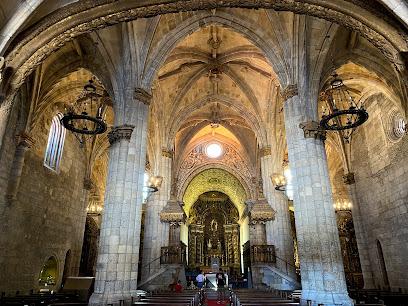
Miradouro da Varanda dos Carqueijais
Experience breathtaking views and serene nature at Miradouro da Varanda dos Carqueijais, a scenic gem in Covilhã, Portugal.

Covão dos Conchos
Explore the stunning natural beauty of Covão dos Conchos, a unique lagoon surrounded by breathtaking landscapes in Serra da Estrela Nature Park, Portugal.

Museu Nacional Grão Vasco
Explore the rich artistic heritage of Portugal at Museu Nacional Grão Vasco, home to stunning works by Grão Vasco and more in Viseu.

Palácio dos Condes de Anadia - Mangualde, VISEU
Discover the rich history and architectural beauty of Palácio dos Condes de Anadia in Mangualde, a must-visit attraction for culture enthusiasts.

Miradouro do Penedo c'Abana / Penedo Oscilante
Experience the stunning beauty of Miradouro do Penedo c'Abana, a scenic viewpoint in Póvoa de Midões offering breathtaking views and a peaceful retreat in nature.

Solar Do Dao Wine
Experience the rich heritage of Dão wines at Solar do Vinho do Dão, a must-visit destination for wine lovers in Viseu, Portugal.

Santar Vila Jardim
Explore the enchanting beauty and tranquility of Santar Vila Jardim, a serene garden oasis in Portugal perfect for relaxation and nature appreciation.

Pedra do Urso
Experience the breathtaking views and natural beauty of Pedra do Urso, a must-visit attraction in Cantar-Galo, Portugal.

Cântaro Magro
Explore the breathtaking landscapes and rich biodiversity at Cântaro Magro, a top tourist attraction in Manteigas, Portugal.

Miradouro do Covão
Explore the stunning vistas of Miradouro do Covão, a must-visit viewpoint in Unhais da Serra, perfect for nature lovers and photographers alike.

Sanatorium Sightseeing Spot
Explore the serene Sanatorium Sightseeing Spot in Covilhã, where history meets stunning mountain views and tranquil surroundings.
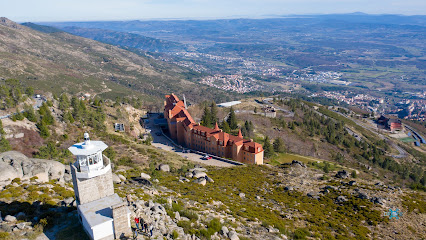
Praia Fluvial de Vila do Carvalho
Experience the tranquility and natural beauty of Praia Fluvial de Vila do Carvalho, a hidden gem in Covilhã, perfect for relaxation and outdoor fun.

Nave da Mestra, Manteigas
Discover the breathtaking beauty of Nave da Mestra, a scenic jewel in Manteigas, perfect for nature lovers and photographers alike.

Poço do Funil
Explore the stunning Poço do Funil in Cortes do Meio, a natural pool surrounded by lush landscapes, perfect for relaxation and adventure.

Essential places to dine
Luna Hotel Serra da Estrela
Experience the beauty of Serra da Estrela at Luna Hotel – where comfort meets adventure amidst breathtaking mountain views.

Taberna A Laranjinha
Experience authentic Portuguese cuisine at Taberna A Laranjinha in Covilhã - where tradition meets flavor.

Varanda da Estrela
Discover culinary delights at Varanda da Estrela, where breathtaking views meet authentic Portuguese flavors in Penhas da Saúde.

Lenda Viriato
Discover authentic Portuguese flavors at Lenda Viriato in Unhais da Serra – where every dish tells a story.

Restaurante Steakhouse Alfátima
Discover exceptional steak dining amidst stunning landscapes at Restaurante Steakhouse Alfátima in Manteigas, Portugal.

O Vicente
Discover O Vicente: A charming restaurant in Loriga Seia offering authentic Portuguese dishes and delightful espresso in a cozy atmosphere.

As Thermas
Experience authentic Portuguese flavors at As Thermas in Unhais da Serra - a culinary haven for travelers seeking local delicacies.

Casa do Clube
Discover authentic Portuguese flavors at Casa do Clube in Cortes do Meio - an unforgettable tapas experience awaits you!

Restaurante O Olival
Experience authentic Portuguese flavors at Restaurante O Olival in Manteigas - where tradition meets taste.

Restaurante Paragem Serradalto
Experience authentic Portuguese cuisine in the heart of Manteigas at Restaurante Paragem Serradalto - where tradition meets flavor.

Restaurante Miralva
Discover authentic Portuguese flavors at Restaurante Miralva in Sabugueiro - where every meal tells a story.

Império
Experience authentic Portuguese cuisine at Restaurante Império in Loriga – where every dish tells a story of tradition and flavor.
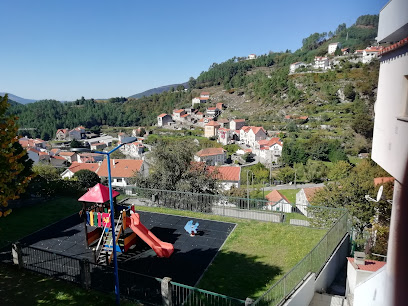
Mirante da Estrela
Discover authentic Portuguese cuisine at Mirante da Estrela while enjoying stunning mountain views in Sabugueiro.

Puro
Discover the exquisite flavors of Portugal at Puro in Cortes do Meio - where tradition meets innovation in every dish.

As Lezírias
Savor authentic Portuguese barbecue at As Lezírias in Unhais da Serra - where flavor meets tradition.

Markets, malls and hidden boutiques
Serra Shopping
Experience a shopping paradise at Serra Shopping Mall in Covilhã, where retail, dining, and entertainment converge for an unforgettable day out.
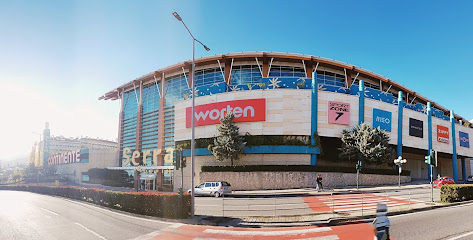
Nossa Senhora da Boa Estrela
Explore Nossa Senhora da Boa Estrela, a stunning sculpture in Serra da Estrela Nature Park, where art meets breathtaking natural beauty.

Centro Comercial da Torre
Explore the best of Alvoco da Serra at Centro Comercial da Torre, a vibrant department store offering local crafts, trendy fashion, and delicious cuisine.

Sabugueiro
Explore the vibrant produce market of Sabugueiro in Alvoco da Serra, where local flavors and fresh ingredients come together in a delightful atmosphere.

Mercearia da Estrela
Explore the flavors of Unhais da Serra at Mercearia da Estrela, your go-to destination for exquisite cheeses, fine wines, and aromatic teas.

Sport Zone Covilhã
Discover quality sportswear at Sport Zone Covilhã for all your athletic needs in a vibrant shopping environment.

MEO
Discover MEO at Serra Shopping in Covilhã for all your telecommunications and electronic needs while exploring Portugal.

Essências da Serra
Explore Covilhã's vibrant Essências da Serra market for fresh produce and authentic Portuguese flavors in a lively local atmosphere.

Casa Guedes
Explore Casa Guedes in Manteigas for fresh produce, local delicacies, and a taste of Portugal's vibrant culinary culture.

Colmeia Doce 2
Experience the sweet taste of Portugal at Colmeia Doce 2 in Unhais da Serra, where fresh pastries and local delights await your indulgence.

Primavera
Discover the sweet taste of Portugal at Primavera, a delightful pastry shop in Unhais da Serra offering an array of traditional sweets.

Loja Tradicional
Experience the authentic taste of Portugal at Loja Tradicional in Unhais da Serra, a charming grocery store filled with local delicacies.
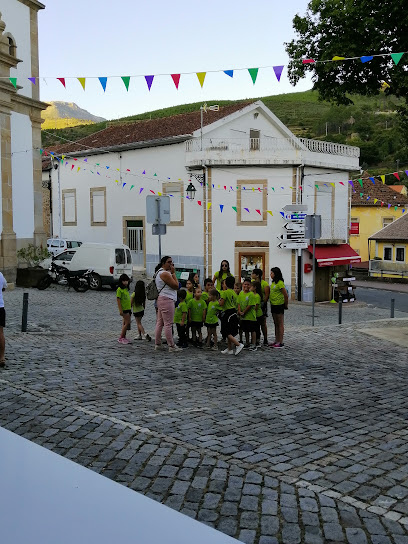
Perfumes & Companhia - Serra Shopping
Explore a world of exquisite fragrances and cosmetics at Perfumes & Companhia in Serra Shopping, Covilhã, where beauty meets elegance.

Mercearia A Beirã
Experience the rich flavors of Manteigas at Mercearia A Beirã, where local produce meets traditional Portuguese cuisine.

MO Covilhã
Discover the latest fashion trends at MO Covilhã, your ultimate clothing destination in the heart of Covilhã, Portugal.

Essential bars & hidden hideouts
Puro
Experience the flavors of Portugal at Puro, where innovative cuisine meets local charm in the heart of Cortes do Meio.

Restaurante Alta Clube
Experience culinary excellence in the heart of Cortes do Meio at Restaurante Alta Clube, where luxury meets flavor in every dish.

Folhas Soltas
Discover Folhas Soltas, a charming bar in Seia, Portugal, where local drinks and a warm atmosphere await every traveler.
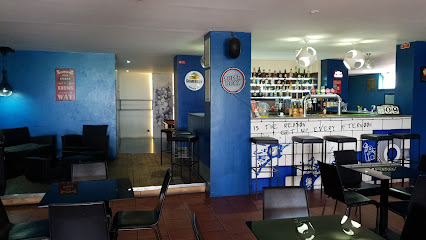
Nosso bar
Discover the lively Nossa Bar in Covilhã, where locals gather for great drinks, delicious snacks, and a vibrant nightlife experience.

Mellow Bar, Wine & Blues
Discover the charm of Mellow Bar, Wine & Blues in Teixoso, where live music and fine wines create an unforgettable experience for every traveler.

Café Bar Covilhã Jardim
Discover the charm of Café Bar Covilhã Jardim, a cozy retreat in Covilhã offering delicious drinks and a welcoming atmosphere for all visitors.

Bar Holy Hour
Discover the vibrant nightlife of Covilhã at Bar Holy Hour, where locals gather for drinks and unforgettable memories.

8Avos Bar
Discover the lively 8Avos Bar in Covilhã, where delicious drinks and a vibrant atmosphere await you in this charming Portuguese city.

Charlot Bar
Experience the vibrant nightlife and local charm of Charlot Bar in Covilhã, a perfect spot for relaxation and socializing with friends.
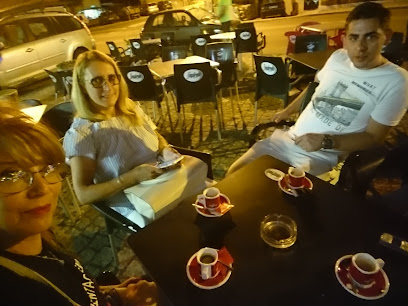
Vida Santa
Explore the lively nightlife at Vida Santa, Covilhã's favorite bar, offering a delightful blend of local culture and vibrant social experience.

Bar da Prainha (Nova Gerência)
Discover the culinary delights of Bar da Prainha, a grill restaurant in Unhais da Serra known for its warm atmosphere and delicious grilled specialties.
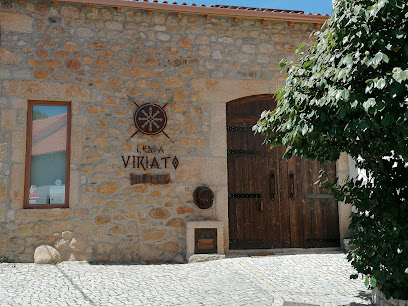
Bar da praia fluvial Loriga
Discover the charm of Bar da Praia Fluvial Loriga, where stunning riverside views meet delightful local flavors in a serene atmosphere.

Hookah Lounge Bar
Experience the vibrant atmosphere and rich flavors at Covilhã's top Hookah Lounge Bar, where relaxation meets cultural charm.

Bar dos Bombeiros
Discover the charm of Bar dos Bombeiros in Paul, where local flavors and a warm atmosphere await travelers seeking an authentic Portuguese experience.

CARLOS MOREIRA UNIPESSOAL LDA
Experience the local charm and vibrant atmosphere at Carlos Moreira Unipessoal Lda, a must-visit bar in Unhais da Serra.

Local Phrases about Serra da Estrela
-
- HelloOlá
[oh-lah] - GoodbyeAdeus
[ah-day-oosh] - YesSim
[seem] - NoNão
[now] - Please/You're welcomePor favor/De nada
[pohr fah-vohr/day nah-dah] - Thank youObrigado/a
[oh-bree-gah-doh/ah] - Excuse me/SorryDesculpe/Desculpa
[dehs-kool-peh/dehs-kool-pah] - How are you?Como está?
[koh-moh ehs-tah] - Fine. And you?Bem. E você?
[behn/eh voh-seh] - Do you speak English?Fala inglês?
[fah-lah een-glehsh] - I don't understandNão percebo
[now pehr-seh-boh]
- HelloOlá
-
- I'd like to see the menu, pleaseGostaria de ver o menu, por favor
[goh-stah-ree-ah deh vehr ooh meh-noo/pohr fah-vohr] - I don't eat meatNão como carne
[now koh-moh kahr-neh] - Cheers!Saúde!
[sow-deh] - I would like to pay, pleaseGostaria de pagar, por favor
[goh-stah-ree-ah deh pah-gahr/pohr fah-vohr]
- I'd like to see the menu, pleaseGostaria de ver o menu, por favor
-
- Help!Ajuda!
[ah-zhoo-dah] - Go away!Vai embora!
[vah-ee ehm-boh-rah] - Call the Police!Chame a Polícia!
[shah-meh ah poh-lee-see-ah] - Call a doctor!Chame um médico!
[shah-meh oom meh-dee-koo] - I'm lostEstou perdido/a
[ehs-toh pehr-dee-doh/ah] - I'm illEstou doente
[ehs-toh doo-ehn-teh]
- Help!Ajuda!
-
- I'd like to buy...Gostaria de comprar...
[goh-stah-ree-ah deh kohm-prahr] - I'm just lookingEstou só a ver
[ehs-toh soh ah vehr] - How much is it?Quanto custa?
[kwahn-toh koosh-tah] - That's too expensiveIsso é muito caro
[ee-soh eh mwitoo kah-roh] - Can you lower the price?Pode baixar o preço?
[poh-deh bahy-shahr ooh preh-soh]
- I'd like to buy...Gostaria de comprar...
-
- What time is it?Que horas são?
[keh oh-rahsh sow] - It's one o'clockÉ uma hora
[eh oo-mah oh-rah] - Half past (10)Meia(s) (10)
[meh-yah(s) (dehs)] - MorningManhã
[mah-nyah] - AfternoonTarde
[tahr-deh] - EveningNoite
[noy-teh] - YesterdayOntem
[ohn-tehm] - TodayHoje
[oh-jeh] - TomorrowAmanhã
[ah-mah-nyah] - 1Um
[oom] - 2Dois
[doh-ees] - 3Três
[trehs] - 4Quatro
[kwah-troh] - 5Cinco
[seen-koh] - 6Seis
[saysh] - 7Sete
[seh-teh] - 8Oito
[oy-toh] - 9Nove
[noh-veh] - 10Dez
[dehz]
- What time is it?Que horas são?
-
- Where's a/the...?Onde fica o/a...?
[ohn-deh fee-kah ooh/ah] - What's the address?Qual é a morada?
[kwahl eh ah moh-rah-dah] - Can you show me (on the map)?Pode mostrar-me (no mapa)?
[poh-deh mohs-trahr-meh (noo mah-pah)] - When's the next (bus)?Quando é o próximo (autocarro)?
[kwahn-doo eh oo proh-kshee-moo (ow-toh-kah-roo)] - A ticket (to ....)Um bilhete (para ....)
[oom bee-lyeh-teh (pah-rah)]
- Where's a/the...?Onde fica o/a...?
History of Serra da Estrela
-
Serra da Estrela has been inhabited since prehistoric times, with evidence of human presence dating back to the Neolithic era. Archaeological findings, including dolmens and megalithic structures, offer glimpses into the lives of early settlers who utilized the region's natural resources for survival.
-
During the Roman period, Serra da Estrela became an important part of the vast network of roads that connected the Iberian Peninsula. Roman milestones and remnants of ancient roads can still be found, highlighting the strategic importance of the region in facilitating trade and military movements.
-
The medieval era saw the construction of numerous castles and fortifications in the Serra da Estrela region. These structures, such as the Castle of Linhares and the Castle of Celorico da Beira, were built to defend against invasions and played a crucial role in the territorial disputes between the Christian kingdoms and the Moors.
-
Serra da Estrela is renowned for its long-standing traditions of shepherding and pastoralism. The region's unique climate and terrain have made it an ideal location for raising sheep, and the local economy has historically relied on the production of wool, cheese, and other dairy products. The famous Queijo Serra da Estrela, a traditional cheese, is a testament to these enduring practices.
-
During the Middle Ages, Serra da Estrela was home to a significant Jewish community. Jewish residents contributed to the cultural and economic development of the region, particularly in towns like Belmonte. The community's rich heritage is still evident today, with the Belmonte Jewish Museum and the preservation of unique traditions and customs.
-
In the 20th century, Serra da Estrela gained recognition for its unique natural beauty and ecological significance. The establishment of the Serra da Estrela Natural Park in 1976 marked a significant step towards the conservation of its diverse flora and fauna. The park aims to protect the region's landscapes, ecosystems, and cultural heritage while promoting sustainable tourism.
-
The 20th and 21st centuries have seen Serra da Estrela evolve into a popular destination for winter sports enthusiasts. The region's highest peak, Torre, offers skiing and snowboarding opportunities, attracting visitors from across Portugal and beyond. The development of infrastructure and facilities has transformed Serra da Estrela into a year-round tourism hotspot.
Serra da Estrela Essentials
-
Serra da Estrela is located in central Portugal, and the nearest international airport is Lisbon Portela Airport, approximately 280 kilometers away. From Lisbon, you can rent a car and drive to Serra da Estrela, which takes around 3 hours. Alternatively, you can take a train from Lisbon to Covilhã, a nearby town, and then a taxi or bus to Serra da Estrela. There are also bus services from major cities like Porto and Coimbra to towns like Covilhã and Seia, which are gateways to the Serra da Estrela region.
-
Public transportation in Serra da Estrela is limited, so renting a car is the most convenient way to explore the area. Local buses connect towns like Covilhã, Seia, and Manteigas, but schedules can be infrequent. Taxis are available but can be more expensive. For those who enjoy biking, there are numerous trails and roads suitable for cycling. During the winter season, shuttle services are available to the ski resorts.
-
The official currency in Portugal is the Euro (EUR). Credit cards are widely accepted in hotels, restaurants, and shops in Serra da Estrela. However, it is advisable to carry some cash, especially for smaller establishments and rural areas. ATMs are available in towns like Covilhã and Seia. Ensure you have enough cash before heading into more remote areas.
-
Serra da Estrela is generally a safe destination for tourists. However, it is always advisable to take standard precautions. Avoid isolated areas at night and be vigilant with your belongings in crowded places. There are no specific high-crime areas targeting tourists in Serra da Estrela. Always check weather conditions before hiking or engaging in outdoor activities, as weather can change rapidly in the mountains.
-
In case of emergency, dial 112 for immediate assistance. This number will connect you to police, fire, and medical services. There are medical facilities in towns like Covilhã and Seia. It is recommended to have travel insurance that covers medical emergencies. Pharmacies are available in the main towns where you can purchase over-the-counter medications.
-
Fashion: Do wear comfortable and weather-appropriate clothing, especially for outdoor activities. Layering is advisable as temperatures can vary. Don't wear heavy perfumes when out in nature. Religion: Do respect local customs and traditions. Some areas may have religious sites; dress modestly when visiting. Public Transport: Do be courteous and offer your seat to elderly passengers. Don't be loud or disruptive on public transport. Greetings: Do greet locals with a friendly 'Bom dia' (Good morning) or 'Boa tarde' (Good afternoon). A handshake is common in formal settings. Eating & Drinking: Do try local foods such as Serra da Estrela cheese and traditional lamb dishes. Don't refuse food or drink offerings, as it may be considered impolite.
-
To experience Serra da Estrela like a local, visit local markets in towns like Seia and Covilhã where you can buy fresh produce and artisanal products. Engage with locals, who are often friendly and willing to share stories about the region's history and culture. Don't miss the opportunity to visit the Natural Park of Serra da Estrela, offering stunning landscapes and hiking trails. Winter sports enthusiasts should visit the ski resort in Torre, the highest point in mainland Portugal.
Trending Landmarks in Serra da Estrela
-
Serra da Estrela Nature Park
-
Covão d'Ametade
-
Poço do Inferno
-
Torre (Serra da Estrela)
-
Nossa Senhora da Boa Estrela
-
Teleférico da Serra da Estrela
-
Mondeguinho (Nascente do rio Mondego)
-
Fonte Santa, Caldas de Manteigas
-
Miradouro do Vale Glaciar
-
Cabeça do Velho
-
Pedra do Urso
-
Miradouro do Fragão do Corvo, Manteigas
-
Cântaro Magro
-
Glacial Valley Scenic spot
-
Miradouro do Covão
Nearby Cities to Serra da Estrela
-
Things To Do in Lamego
-
Things To Do in Aveiro
-
Things To Do in Tomar
-
Things To Do in Vila Real
-
Things To Do in Viseu
-
Things To Do in Porto
-
Things To Do in Guimarães
-
Things To Do in Braga
-
Things To Do in Chaves
-
Things To Do in Caldas da Rainha
-
Things To Do in Badajoz
-
Things To Do in Salamanca
-
Things To Do in Bragança
-
Things To Do in Ponte de Lima
-
Things To Do in Viana do Castelo













